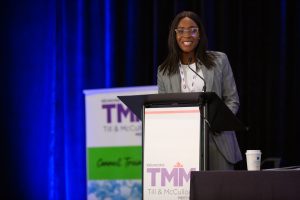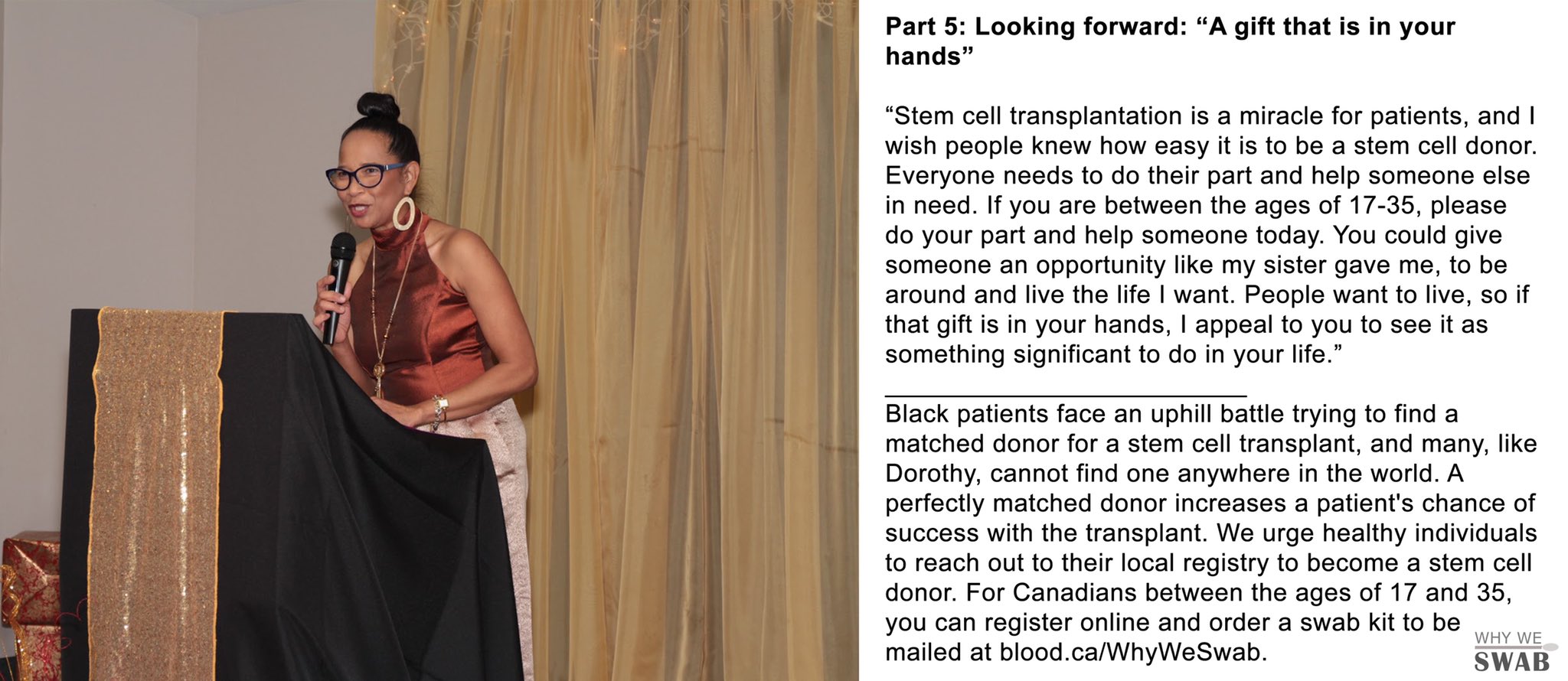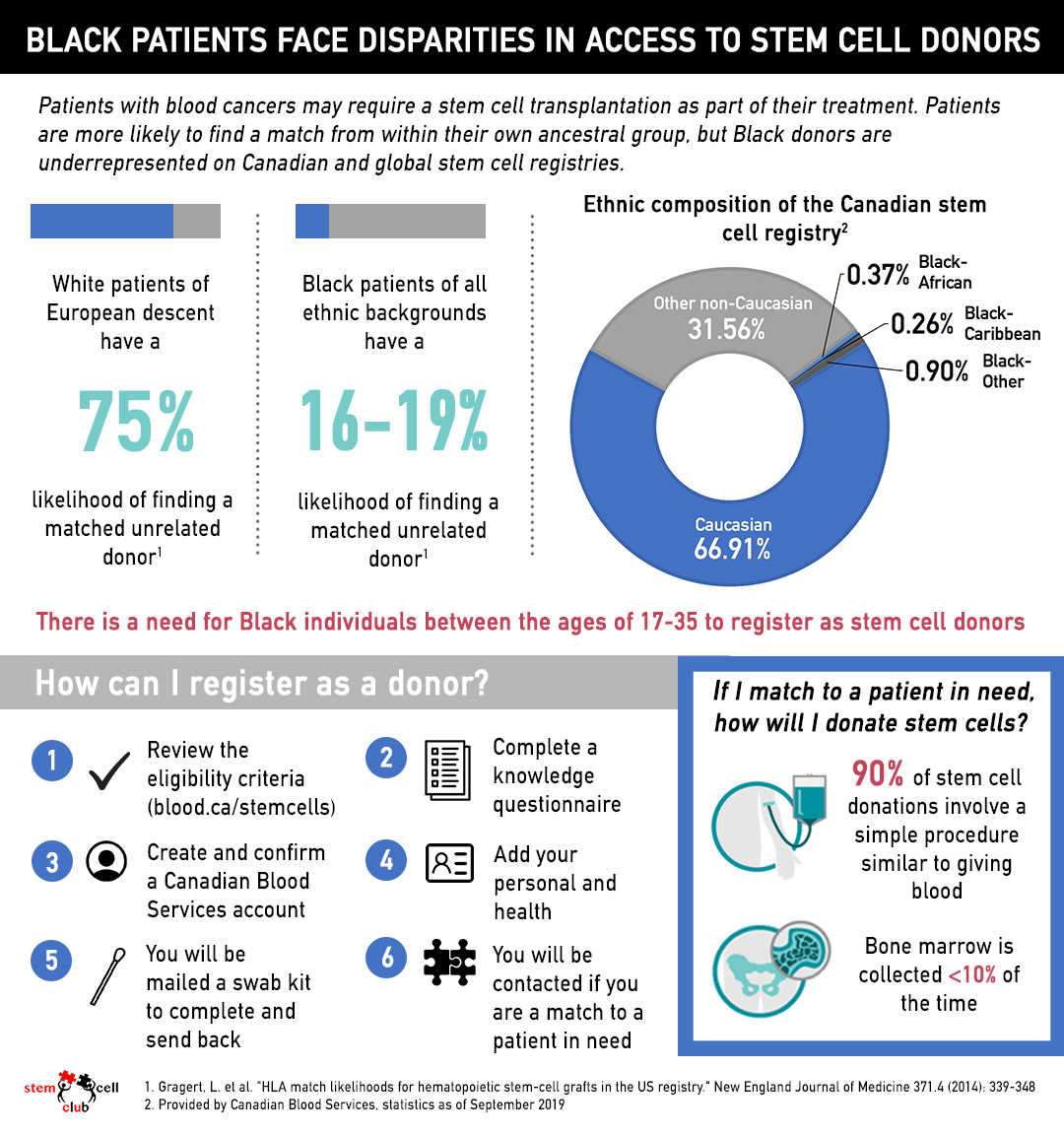Sylvia Okonofua is a donor recruiter with Stem Cell Club. Over the past six years, Sylvia has worked to address racial disparity in access to volunteer, unrelated stem cell donors. She spearheaded “Black Donors Save Lives,” a national campaign she developed in collaboration with Black volunteers and donation stakeholders to engage Black people in Canada to donate blood stem cells. Sylvia’s leadership with this campaign has been covered in over 15 print/broadcast media outlets, including CBC News, CTV News, and Global News. Sylvia also sits on several national committees in donor recruitment, including with Canadian Donation and Transplantation Research Group, and Why We Swab, a library of stories in stem cell donation. She is working towards a career in Medicine, and continues to advocate for underserved groups in health care. You can find her on Twitter @veeahia.
I was invited to be a plenary speaker on the Mistrust and Misinformation panel at the 2022 Till & McCulloch Meetings in Vancouver. My talk outlined my work as a donor recruiter with Stem Cell Club spearheading the “Black Donors Save Lives” campaign, aimed at creating awareness about the need for more Black stem cell donors on Canada’s stem cell registry through Canadian Blood Services.
Why is it important to have a diverse stem cell donor registry?
Many patients with high risk or advanced hematologic malignancies (as well as those with immune or metabolic diseases) require an allogeneic (i.e. from a donor) stem cell transplantation as part of their curative treatment. However, the majority of patients do not have a fully matched donor within their family and require an alternative donor. Matched, unrelated donors are the preferred and most commonly used alternative donor type. These unrelated donors are recruited at stem cell drives, where they swab their cheek (for a tissue sample) and provide informed consent to join the registry. Recruiters with Stem Cell Club run such drives in cities across Canada, and I have led many myself in Regina, Saskatchewan, where I live and work.
However, there is a marked racial disparity in access to unrelated donors. White patients of Northwest European ancestry have a greater than 75 percent chance of finding a matched unrelated donor compared to only a 15-19 percent chance for Black patients of any ancestry. Furthermore, Black people are underrepresented as potential donors on the registry. For example, Black people make up three percent of the Canadian population, but less than two percent of potential donors on Canada’s stem cell registry.
Black Donors Save Lives campaign
Together with the community of practice in stem cell donation in Canada, we collaborated with Black Canadians to develop recruitment multimedia to engage Black communities to donate. Below are some examples of the multimedia that were created, reviewed for accuracy by transplantation experts and for appeal by Black Canadians. We then published these materials online and engaged with partner groups from the Black community to share them with their networks.
The campaign was first launched in February 2021, during Black History Month, and it was run a second time the following year (February 2022). Recruitment multimedia were shared and re-shared by >15 media outlets, multiple medical organizations, and a wide array of community groups. Overall, our work is a model for working closely with a community to address a problem it faces, as well as for engaging marginalized or underrepresented populations to science and health care.
Addressing historic mistrust
The health-care system has a long history of mistreating Black people, including forced sterilization of Black women as well as Black people being used as “guinea pigs” for medical research. A devastating example was the infamous Tuskegee syphilis study where treatment for this disease was withheld from hundreds of Black men for decades to allow physicians to track the course of the disease. The result of this history is ongoing mistrust from the Black community, including feelings that the health-care system will not treat Black people well. These feelings are understandable, and have to be addressed as part of efforts to engage Black people to science and medicine. To better understand this important issue in relation to stem cell donation and the Black Donors Save Lives campaign, we conducted focus groups with Black potential donors in Canada to learn about barriers and facilitators to stem cell donation especially relevant to Black communities. This analysis is providing us with important guidance to better engage Black people to stem cell donation specifically, as well as to health care more broadly.
Future plans
We are currently gearing up to run the Black Donors Save Lives campaign again in 2023. Our preparations include securing new community partner groups as well as collaborating with more Black Canadians (including health-care providers from the Black community) to make additional recruitment multimedia. Through these efforts, we will continue to develop positive relationships between Black people and this small part of the health-care system, to overcome barriers to participation. Such collaborations with advocates from diverse communities will be critical to address disparities across health care.
Guest
Latest posts by Guest (see all)
- Regenerative immunotherapy: Hope for chronic autoimmune diseases - September 16, 2025
- Canada’s regenerative revolution: Why AI is the catalyst - September 4, 2025
- Summer by Design: A launchpad for future entrepreneurs and industry scientists - August 14, 2025









Comments